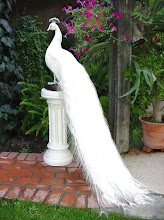Hatha Yoga: The Physical Path
What we commonly call yoga in the West is technically Hatha Yoga. Hatha Yoga (ha="sun" tha="moon") attains the union of mind-body-spirit though a practice of asanas (yoga postures), pranayama (yoga breathing), mudra (body gestures) and shatkarma (internal cleansing). These body centered practices are used to purify the body and cultivate prana and activate kundalini, the subtle energies of the body. Modern Hatha Yoga does not emphasize many of these esoteric practices and focuses primarily on the physical yoga postures.
In the history of yoga, hatha yoga is fairly recent technique that was developed from Tantra Yoga. The tantrics embraced the physical body as the means to achieve enlightenment and developed the physical-spiritual connections and body centered practices that lead to Hatha Yoga. But Hatha Yoga is uniquely focused on transforming the physical body through purification and the cultivation of the life force energy of prana. And all of the techniques of Hatha Yoga are seen as preliminary steps to achieving the deeper states of meditation and enlightenment found in the path of Raja Yoga (meditation).
The oldest and most widely used ancient text on the physical practices of Hatha Yoga is the Hatha Yoga Pradipika. This book was composed in 15th century CE by Swami Swatamarama and is derived from older Sanskrit texts, the teachings from well-known teachers, and from Swatamarama's own yogic experiences. The main goal of this text is to illuminate the physical disciplines and practices of Hatha Yoga and integrate these with the higher spiritual goals of Raja Yoga. Swatamarama begins with explaining the relationship between Hatha Yoga and Raja yoga, informing us that Hatha is a preliminary practice for Raja Yoga. He tells us that obtaining self-control and self-discipline is much easier when we start with the physical and energetic body, verses trying to directly control the mind as in Raja Yoga. Through the mastery of the prana, or energy of the body, we can then easily master the control of the mind and obtain success with Raja Yoga.
It was not until the 1920s when Hatha Yoga became popularized and promoted in India with the work of T. Krishnamacharya and a few other brave and determined yogis. Krishnamacharya traveled through India giving demonstrations of yoga poses and with other pioneering yogis promoted hatha yoga through its strong healing and other positive benefits. Since then, many more western and Indian teachers have become pioneers, popularizing hatha yoga and gaining millions of followers. Hatha Yoga now has many different schools or styles, all emphasizing the many different aspects of the practice.


No comments:
Post a Comment